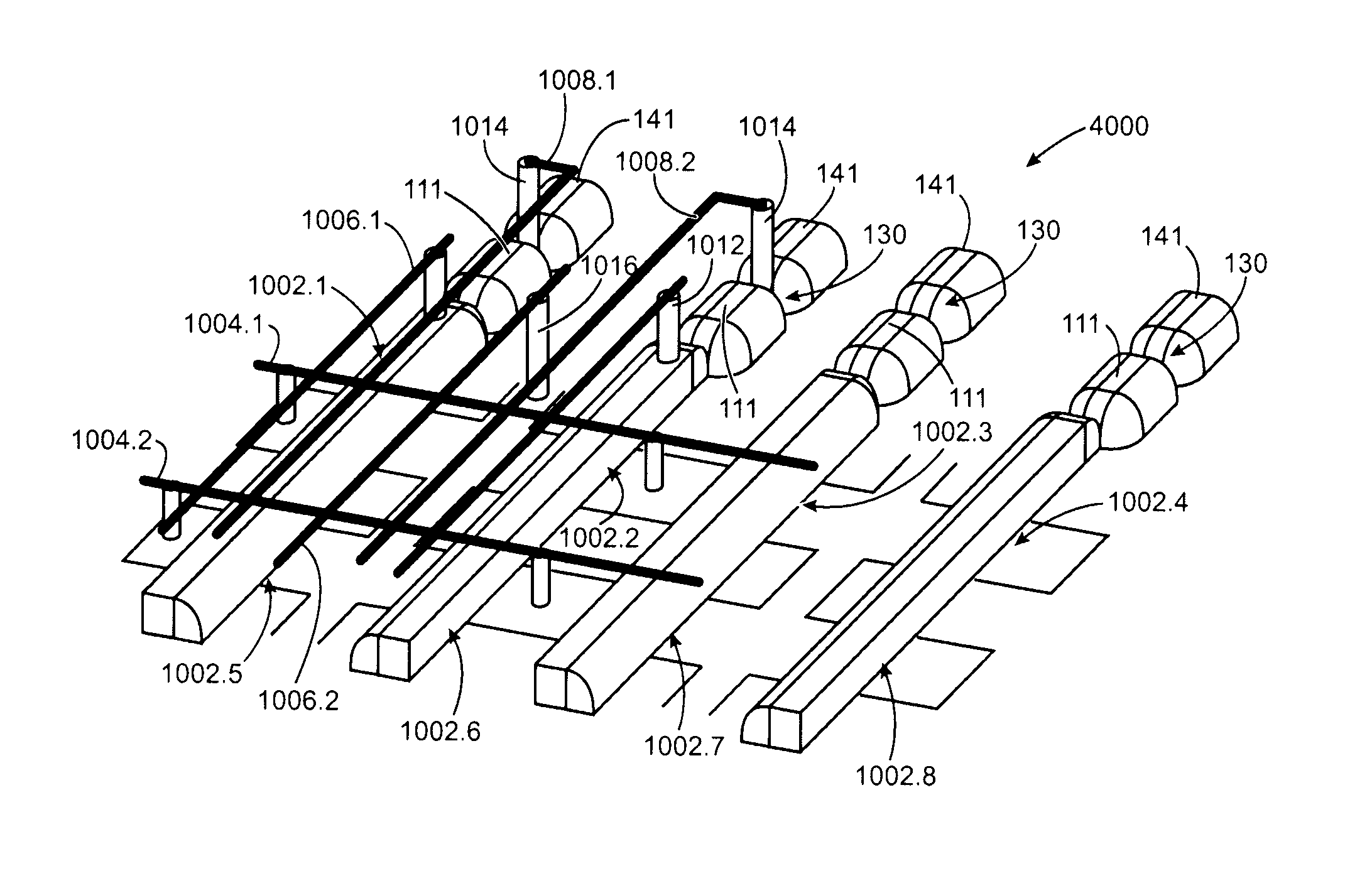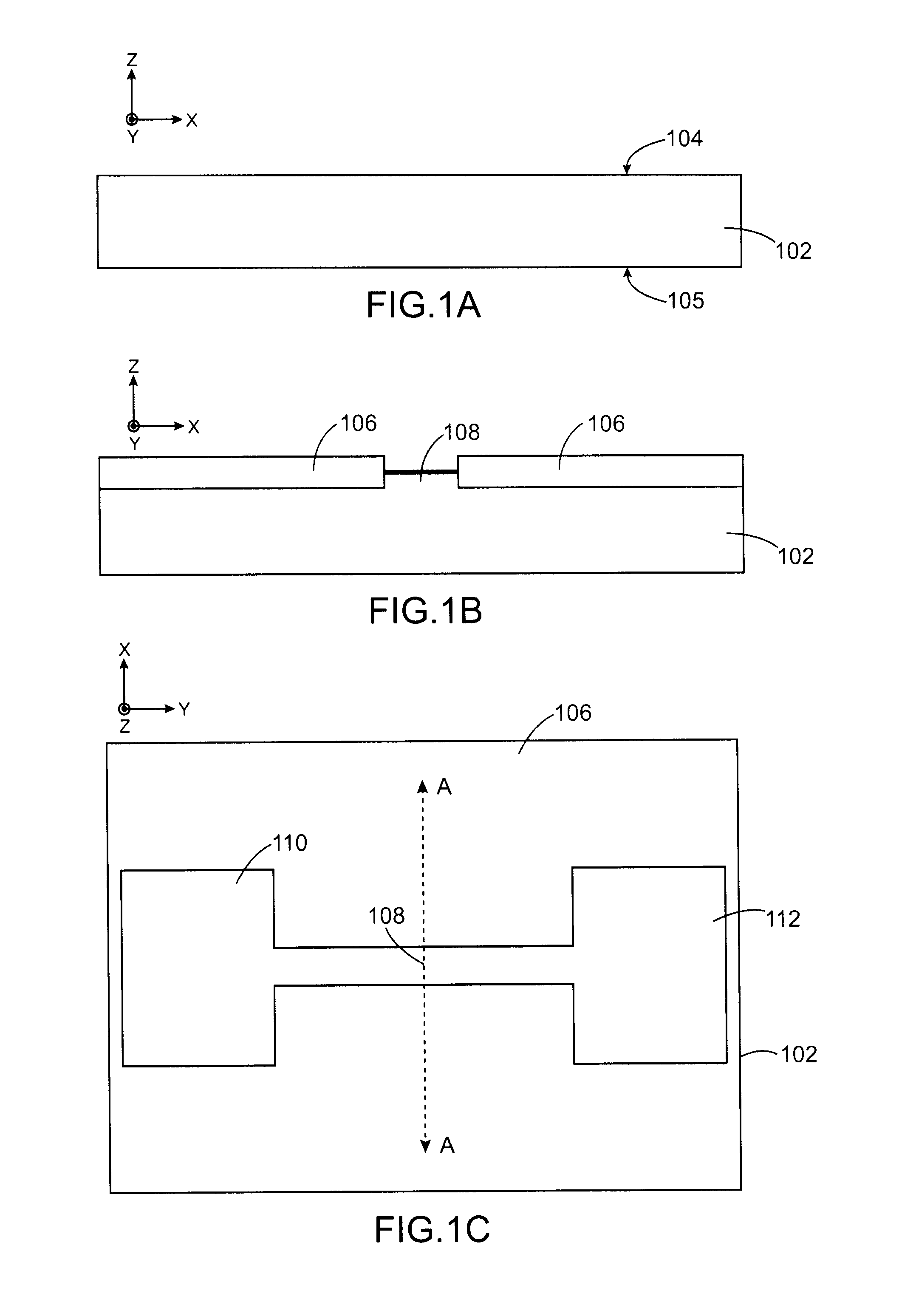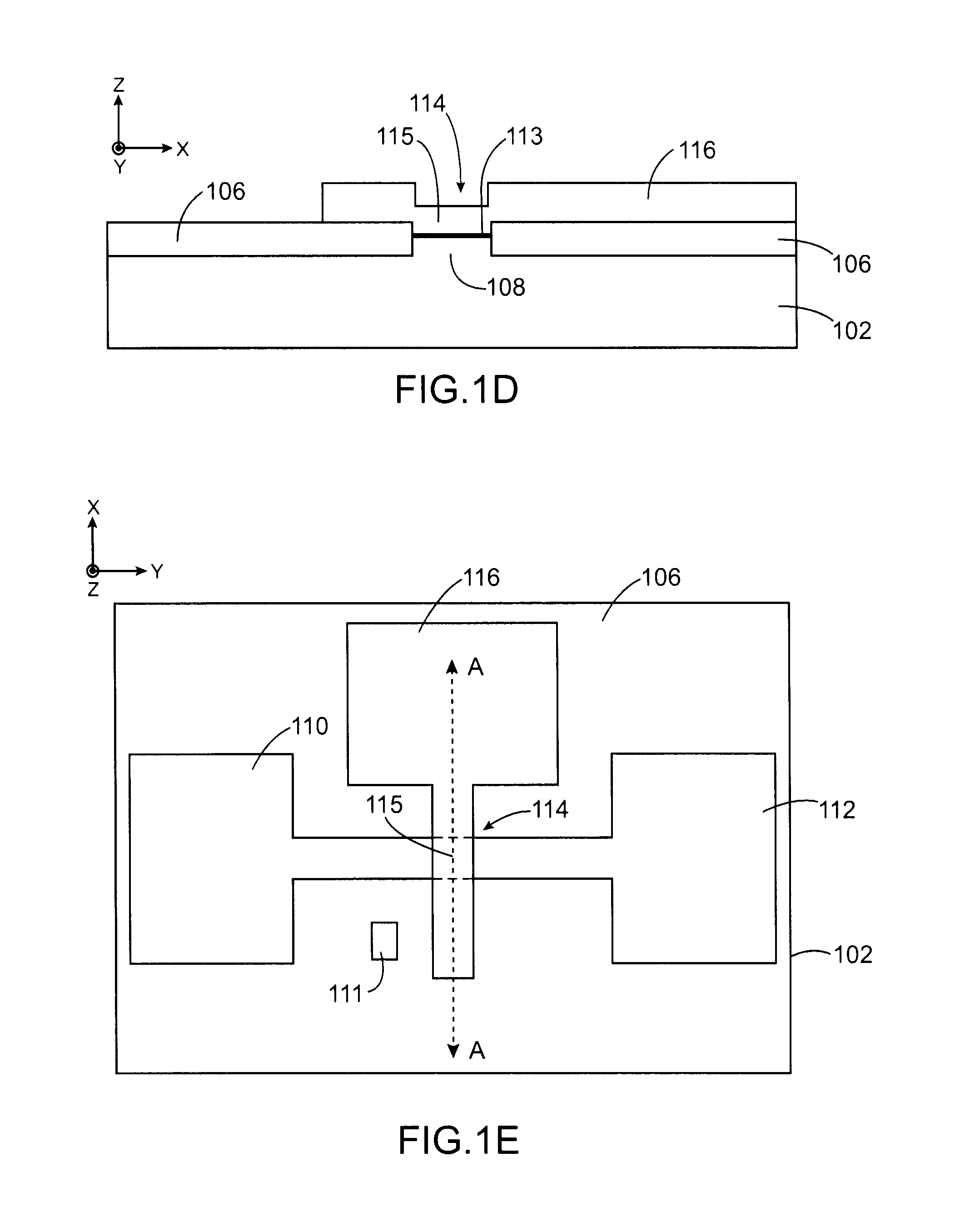Dual gate electronic memory cell and device with dual gate electronic memory cells
a technology of electronic memory cells and electronic memory cells, which is applied in the field of dual gate electronic memory devices, can solve the problems of reducing the reliability of memory, reducing the thickness of the tunnel oxide of the memory, and restricting the reduction of the size of the memory,
- Summary
- Abstract
- Description
- Claims
- Application Information
AI Technical Summary
Benefits of technology
Problems solved by technology
Method used
Image
Examples
first embodiment
[0057]FIGS. 1A to 1O represent steps of a method for making a memory cell
second embodiment
[0058]FIGS. 2A to 2C represent a memory cell
[0059]FIGS. 3, 4A and 4B represent a memory cell according to alternatives of the first and second embodiments,
[0060]FIGS. 5 to 12B represent memory devices made according to different alternative embodiments.
[0061]Identical, similar or equivalent parts of the different figures described hereafter have the same reference numerals so as to make it easier to switch from one figure to the other.
[0062]Different parts represented on the figures are not drawn necessarily to an uniform scale, for the figures to be more intelligible.
[0063]Different possibilities (alternatives and embodiments) should be understood as being not exclusive from each other and can be combined between each other.
PUM
 Login to View More
Login to View More Abstract
Description
Claims
Application Information
 Login to View More
Login to View More - R&D
- Intellectual Property
- Life Sciences
- Materials
- Tech Scout
- Unparalleled Data Quality
- Higher Quality Content
- 60% Fewer Hallucinations
Browse by: Latest US Patents, China's latest patents, Technical Efficacy Thesaurus, Application Domain, Technology Topic, Popular Technical Reports.
© 2025 PatSnap. All rights reserved.Legal|Privacy policy|Modern Slavery Act Transparency Statement|Sitemap|About US| Contact US: help@patsnap.com



